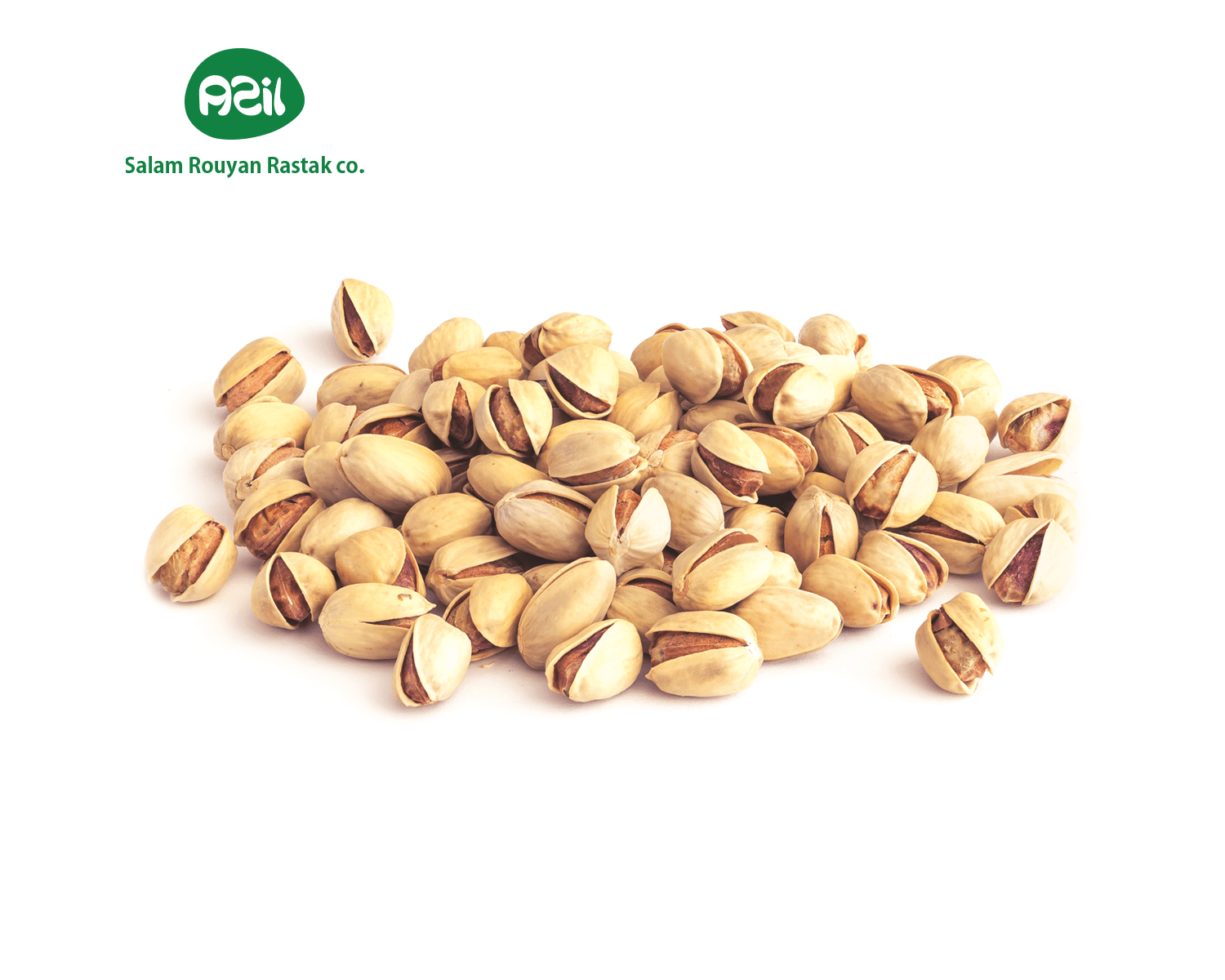Persian Pistachios in Celebratory Feasts
Persian pistachios, with their vibrant green hue, bring delight to Iran’s celebratory feasts. Known as “pesteh,” these nuts are a symbol of abundance during joyous occasions. For example, families serve them roasted at Nowruz to welcome spring with flavor. This article explores how Persian pistachios enhance festive meals, their cultural importance, and their health benefits. We’ll also dive into their cultivation, preparation, and global appeal. As exporters of saffron, nuts, and more, we share Iran’s finest pesteh too. So, discover why these nuts are a feast essential, how they’re used in Persian celebrations, and why they’re cherished worldwide. Join us to explore this green gem and see what makes it a Persian tradition treasure!
Introduction
Persian pistachios add a vibrant green hue to Iran’s celebratory feasts, making every occasion flavorful. Iranians call these nuts “pesteh,” harvesting them from regions like Kerman, and they symbolize abundance in gatherings. Families share this green gem during holidays to spread joy. We export saffron, nuts, and dates, but this isn’t just about trade—it’s about their role in celebrations. Therefore, this article explores how Persian pistachios enhance festive meals, their cultural importance, and their health benefits. Let’s uncover this delightful tradition!
Persian Pistachios in Nowruz Feasts
In Persian culture, families use Persian pistachios to make Nowruz feasts special. They often serve roasted pesteh in bowls to welcome spring with flavor. For instance, many mix this green gem with dried fruits for a festive snack. Also, they sprinkle these nuts over rice dishes for the haft-sin table. This tradition adds a joyful crunch, so Persian pistachios are a Nowruz staple.
Pesteh in Wedding Celebrations
Beyond Nowruz, pesteh plays a key role in Persian wedding celebrations. Families share Persian pistachios with guests, wishing them happiness and prosperity. They also use this green gem in desserts like baklava, adding a nutty richness to the feast. Another custom involves gifting pesteh in decorative boxes for good fortune. These practices often unite guests, showcasing shared joy. As a result, this green gem brings delight to weddings across Iran.
How Farmers Cultivate This Green Gem
Farmers carefully cultivate this green gem to ensure it’s ready for festive use. The process starts with planting pistachio trees in spring, so nuts ripen by late summer. They irrigate the trees regularly to support growth in dry regions. Then, they harvest pesteh by shaking the trees gently. Finally, they dry the nuts in the sun to preserve their flavor. This method keeps Persian pistachios fresh for celebrations throughout Iran.
Preparing Persian Pistachios for Feasts
Families prepare Persian pistachios to shine in celebratory recipes. For example, they roast pesteh with salt for a savory snack at gatherings. They also grind this green gem into a paste for sweets like halva. Another method involves soaking these nuts in saffron water for a luxurious dessert topping. Some even candy pesteh with sugar for a sweet treat. Because of these preparations, this green gem enhances every feast.
Health Benefits of This Green Gem
This green gem offers health benefits that suit festive occasions. Persian pistachios contain healthy fats, supporting heart health during big meals. They also provide protein, giving energy for long celebrations. Moreover, their fiber aids digestion, a relief for guests at feasts. Their antioxidants may even reduce stress, per studies. Therefore, sharing pesteh during celebrations means sharing wellness with every bite.
Cultural Importance of Pesteh in Feasts
In Iran, pesteh holds deep cultural importance in feasts. Using Persian pistachios in celebrations symbolizes wealth, a tradition rooted in ancient customs. Stories tell of kings serving this green gem at banquets to honor guests. Also, pesteh often appears in Yalda Night snacks, representing longevity. At weddings, these nuts signify a fruitful marriage. Consequently, this green gem weaves tradition into Iran’s celebratory moments.
Pistachios and Iran’s Festive Heritage
Iran’s festive heritage thrives with this green gem. Farmers in Kerman grow Persian pistachios, supporting communities who rely on them for celebrations. Since they’re a premium ingredient, using pesteh in feasts shows cultural pride. Bazaars buzz with sales of these nuts before holidays, delighting families. We export saffron, nuts, and these treasures, connecting them to Persian heritage. Thus, this green gem remains a cornerstone of Iran’s festive traditions.
Global Appeal of Persian Pistachios
Around the world, people embrace this green gem in their own celebrations. Its nutty flavor makes it a favorite for global celebrants creating festive treats. For example, European families use Persian pistachios in Christmas desserts, adding an Iranian touch. Also, global markets sell pesteh for holiday recipes, spreading its charm. In Asia, people add these nuts to lunar festival sweets. Iran shares this green gem worldwide, so its festive appeal grows.
Challenges with Using This Nut
Using this nut for feasts can face hurdles. Drought in Kerman, for instance, reduces pistachio harvests, limiting supply for celebrations. Pests like aphids sometimes damage trees, affecting quality. Additionally, shelling Persian pistachios by hand takes time, making it labor-intensive. However, Iran ensures these nuts remain available for festive traditions. This effort keeps the heritage alive despite challenges.
Opportunities to Share Festive Pesteh
The future offers chances to expand these festive traditions. This green gem in holiday kits could, for example, become a global trend for families. Creating pesteh-based snacks for international markets is another idea. Furthermore, celebrants worldwide could buy these nuts online for their festivities, extending their reach. We’re committed to sharing these treasures for global celebrations. So, these opportunities ensure this green gem has a joyful future ahead.
How to Choose the Best Persian Pistachios
Looking for the best pesteh for your feasts? Check for a firm texture—they shouldn’t feel soft, ensuring freshness. Also, look for bright green nuts with open shells, a sign of quality. Taste them for a rich, nutty flavor, perfect for celebrations. Source them from us because we guarantee the best pesteh for your needs. This way, you’ll have top-quality nuts for every festive moment.
Pistachios in Global Festive Practices
Globally, this green gem enhances celebrations in unique ways. In Iran, for instance, families use pesteh in Nowruz snacks to spread joy. European celebrants add these nuts to holiday ice creams for a creamy touch. In Asia, people mix this green gem into rice cakes for lunar festivals, delighting guests. You can also use pesteh in granola for a festive breakfast. These practices show how Persian pistachios bring joy to global celebrations.
The Future of This Green Gem in Feasts
Looking ahead, this green gem will shine in feasts worldwide. New irrigation techniques can combat drought, so supplies remain steady for celebrants. Also, people increasingly seek premium ingredients like pesteh for their festivities. We’re ready to share this awesome nut, along with saffron and more, for global celebrations. Therefore, this treasure will remain a festive favorite for years to come.
Conclusion
This green gem blends rich flavor with the joy of feasts in Iran and beyond. Its taste, cultural role, and health perks make it beloved in celebrations. If you’re planning a gathering, pesteh invites you to add a Persian touch. We deliver Iran’s best with care, so you can trust our quality. Want to try it? Contact us to get this green gem for your next celebration. Let’s share this delightful treat together!


